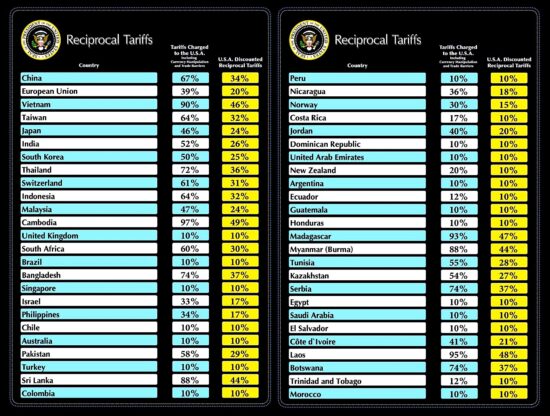
The Trump administration imposed new tariffs on goods imported to the US. To be neutral in my coverage, I asked AI, “How will the new Trump tariffs impact Ricoh/Pentax camera and lens imports to the US?“. Here is the AI answer I got (as far as I know, Ricoh/Pentax gear is manufactured in Japan, Thailand, Vietnam, and the Philippines):
“The new Trump tariffs, as of April 3, 2025, are likely to affect Ricoh/Pentax camera and lens imports to the US by increasing their cost, primarily due to Ricoh’s manufacturing base in Japan and other Asian countries. While specific tariff rates can vary, current indications suggest a 24% tariff on goods from Japan, a 34% tariff on goods from China, and a 10% baseline tariff on imports from all trading partners. Ricoh, the parent company of Pentax, produces most of its cameras and lenses in Japan, with some manufacturing in countries like Vietnam and the Philippines, and potentially still some components or lower-end products sourced from China.
For Ricoh/Pentax products imported directly from Japan, the 24% tariff would apply, raising costs for US importers—distributors or retailers. For example, a Pentax K-3 Mark III camera with a pre-tariff import value of $1,500 could face an additional $360 in tariffs (24%), plus the 10% baseline tariff adding another $150, totaling $1,860—a 24% increase before additional fees or retailer markups. If components or products come from China (e.g., third-party lenses or accessories), the 34% tariff would push costs even higher. Historically, during Trump’s first-term tariffs (2018-2019), companies often passed these costs to US consumers rather than absorbing them fully, and Ricoh/Pentax, with its niche market, may follow suit.
Ricoh has shifted some production away from China in recent years—e.g., opening a plant in Vietnam in 2024—potentially softening the blow from China-specific tariffs. However, Japan remains the core hub for Pentax cameras and lenses, meaning the 24% tariff will hit most of their lineup. Unlike mass-market brands, Ricoh/Pentax’s smaller scale might limit their ability to offset costs through economies of scale, suggesting US retail prices will rise. For instance, a $1,000 Pentax lens could jump to $1,240 or more, depending on how much Ricoh offsets versus passes on.
There’s no immediate boost to US manufacturing either. Trump’s tariffs aim to encourage domestic production, but Ricoh/Pentax has no significant US factories, and the camera industry’s specialized supply chains make stateside production unlikely in the short term. Retaliatory tariffs from Japan or China could further complicate pricing, but for now, US consumers should expect higher prices for Ricoh/Pentax gear in 2025, with the exact impact depending on how much of the tariff burden Ricoh absorbs versus passes along.”
How will the new Trump tariffs impact the camera and lens imports to the US?






